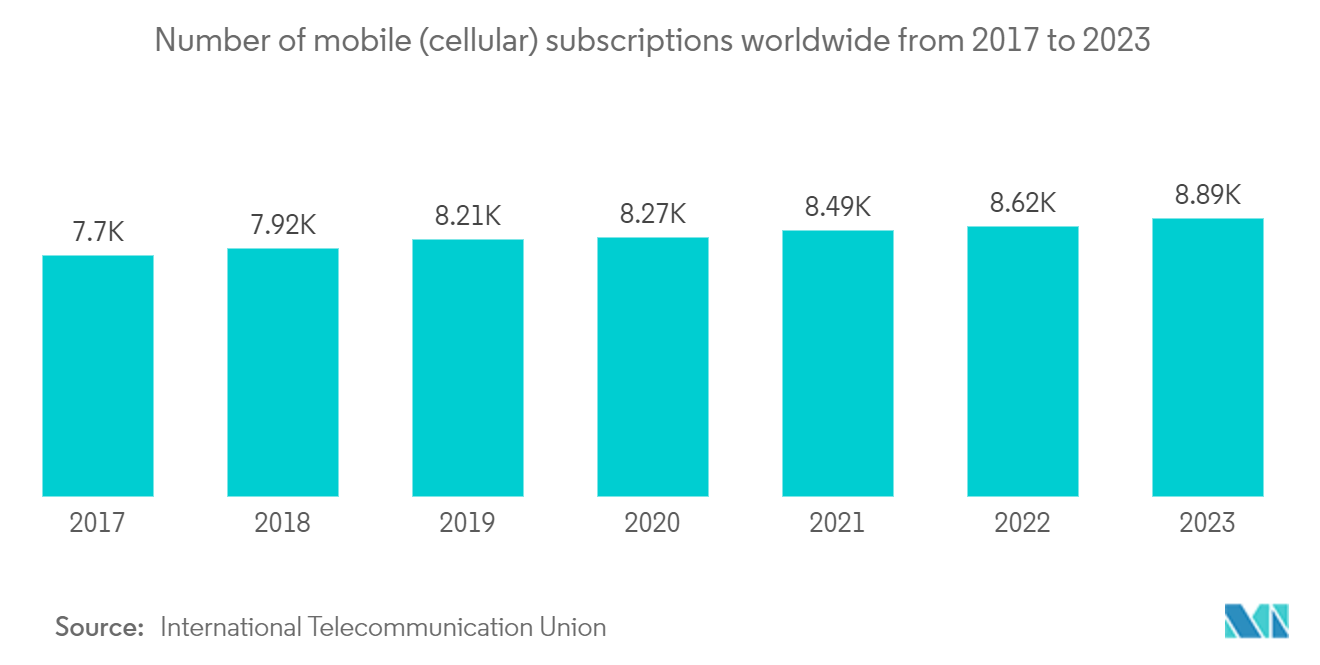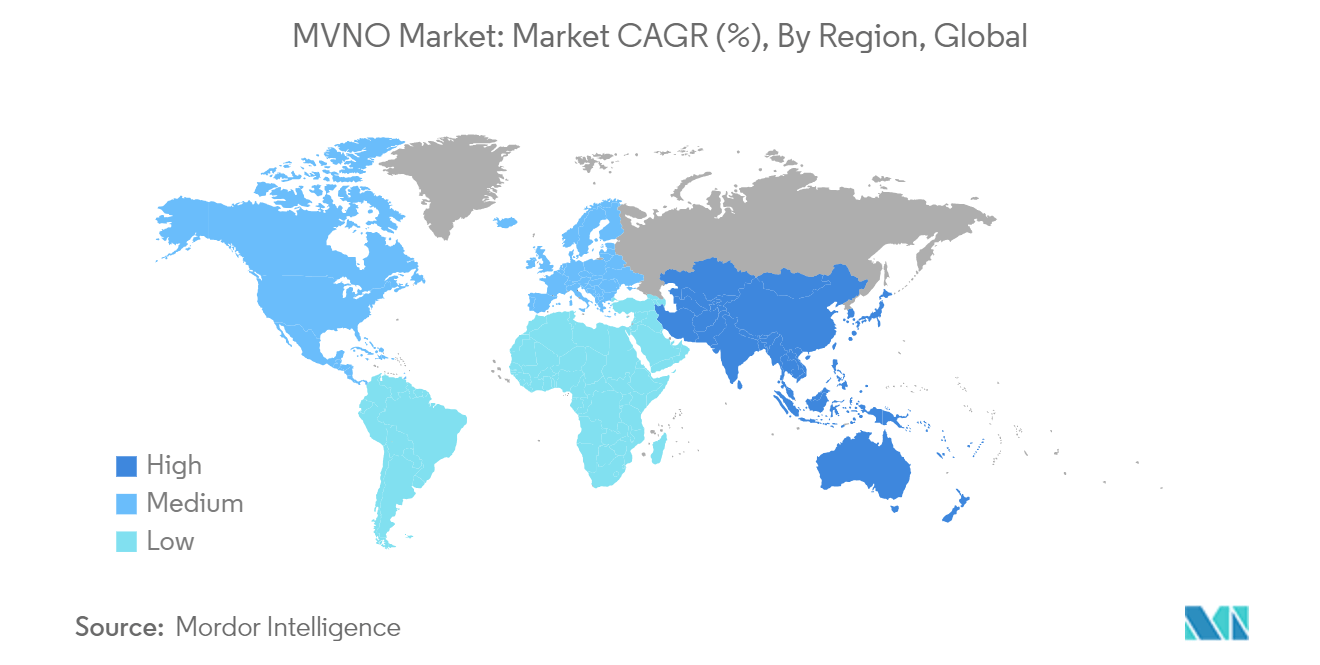Market Trends of Mobile Virtual Network Operator (MVNO) Industry
The Consumer Segment is Expected to Hold a Significant Market Share
- The MVNO market's expansion is primarily fueled by the increasing number of subscribers. With a rising mobile user base, the overall demand for cost-effective and adaptable mobile services is expected to grow. MVNOs seize this opportunity by providing competitive rates and inventive service bundles, positioning themselves as compelling substitutes to conventional MNOs.
- Additionally, the surge in mobile internet usage and the surge in the adoption of smartphones are driving the demand for data-intensive services. Mobile virtual network operators (MVNOs) are primed to meet this need. Their agility in rolling out specialized services positions them to leverage the latest trends and tech developments, notably 5G and IoT. The growing subscriber base also encourages regulatory bodies to support MVNOs and recognize their role in promoting competition and improving service quality. This regulatory backing further boosts the market's attractiveness.
- Driven by consumer demand for customization and affordability, MVNOs are building specialized plans, including pay-as-you-go, family bundles, and data-centric packages. By catering to a broad array of preferences, these MVNOs bolster customer satisfaction, fostering loyalty and fueling market expansion. Moreover, as more consumers switch to MVNOs, the increased market competition compels all players to innovate continuously, enhancing the overall quality and variety of mobile services available, thereby driving further growth in the MVNO market.
- The prominent players in the market provide wireless services at competitive costs worldwide. For instance, in July 2024, Boost Mobile, the latest entrant in the national wireless carrier landscape, introduced its advanced 5G Boost Mobile network in the industry. Its easy-to-understand properties cater to a wide spectrum of consumers, emphasizing flexibility. Furthermore, Boost Mobile is revamping its brand, introducing an upgraded digital buying experience, and bringing innovation into the traditionally stagnant wireless industry.
- Traditionally, the consumer segment has outshone the B2B industry in terms of innovation and pricing. Managing a fleet of devices and their billing is more complex than handling individual consumer services. Given the ease and higher profit margins, MVNOs tend to lean toward investments in the consumer sector.

Asia-Pacific is Expected to Hold a Major Market Share
- Asia-Pacific holds an extensive market share, consistently leading in the adoption of advanced technologies such as 5G, connected mobile devices, and widespread smartphone usage. The region stands out as a key market for smartphones, driven by its rapidly expanding telecom industry and large customer base. Notably, the region is also witnessing a surge in spending on wireless network services.
- Investments in the telecom industries of India, Japan, Australia, Singapore, and South Korea are on the rise, fueling the demand for MVNO services in the region. Regulatory backing in these countries has proven pivotal. Governments are actively endorsing MVNOs to bolster competition and elevate service standards, fostering a market that is both dynamic and consumer-centric. The swift proliferation of 4G and 5G networks equips MVNOs with the necessary infrastructure to provide services compared to conventional MNOs.
- Partnerships between mobile virtual network operators (MVNOs) and mobile network operators (MNOs) play a crucial role. These partnerships provide MVNOs with network resources that enable them to concentrate on customer service and distinctive value offerings. Moreover, technological advancements, like eSIMs and IoT integrations, bolster MVNOs' attractiveness, especially to tech-savvy consumers and businesses with a focus on tailored connectivity solutions. Additionally, the growing trend of digital transformation and the need for flexible, scalable mobile solutions among enterprises are driving MVNO adoption in Asia-Pacific.
- In July 2024, Digital Wallet Solutions Corporation (DWS), a subsidiary of Digital Wallet Corporation (DWC), a rapidly expanding Japanese fintech giant, unveiled its latest MVNO service, "Smiles Connect," in Japan. Users can now conveniently purchase SIM plans through Japan's "Absolute No.1 Smiles Mobile Remittance" app, a creation of DWC.
- Developing countries like India and Indonesia are witnessing a surge in smartphone adoption, particularly in rural areas, propelled by governmental initiatives to bolster digital and mobile economies. This trend is expected to fuel the demand for entry-level smartphones. The country's Digital India initiative spearheads the nation's vision of becoming digitally empowered.


